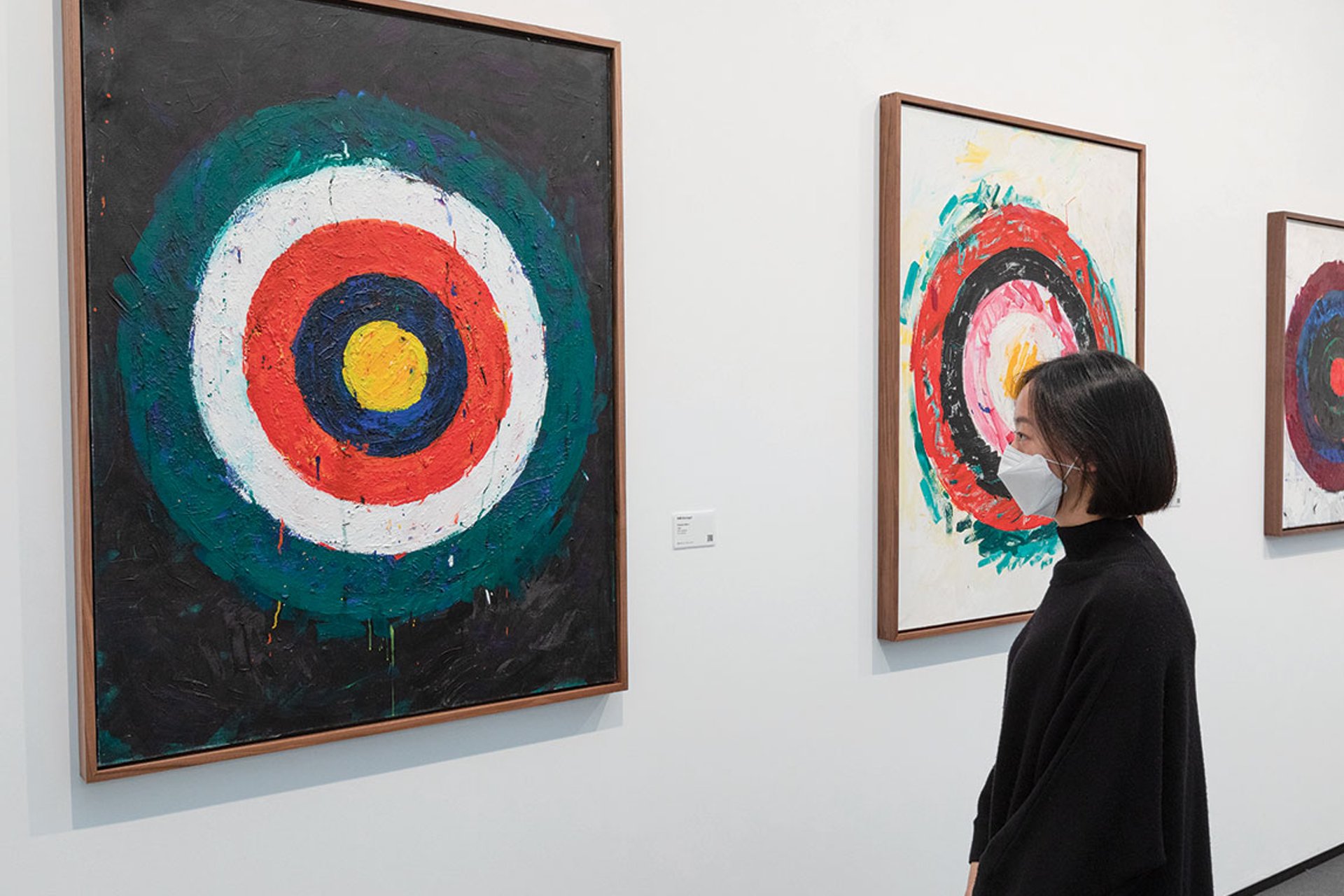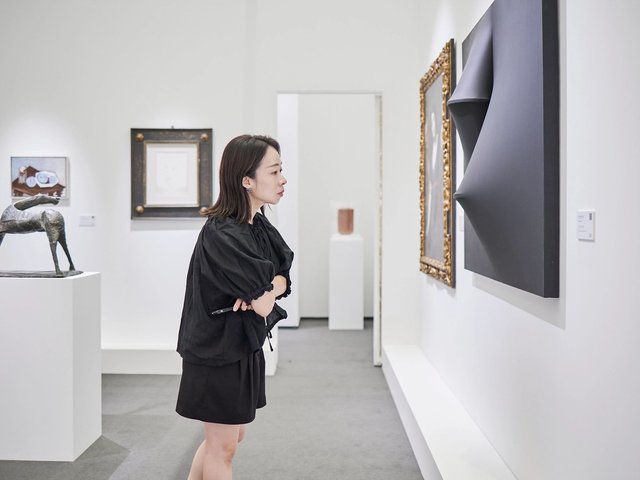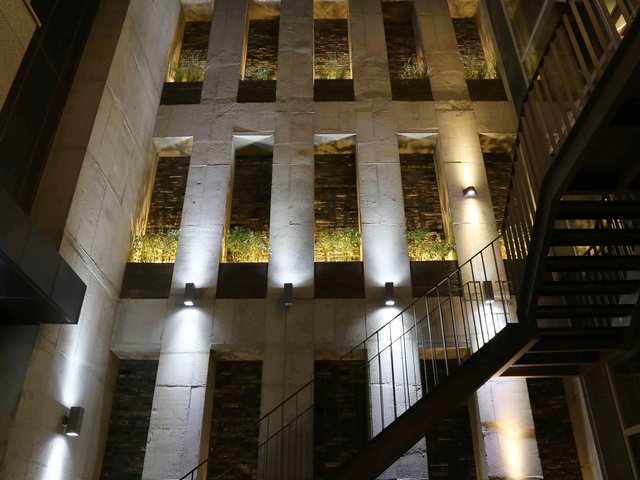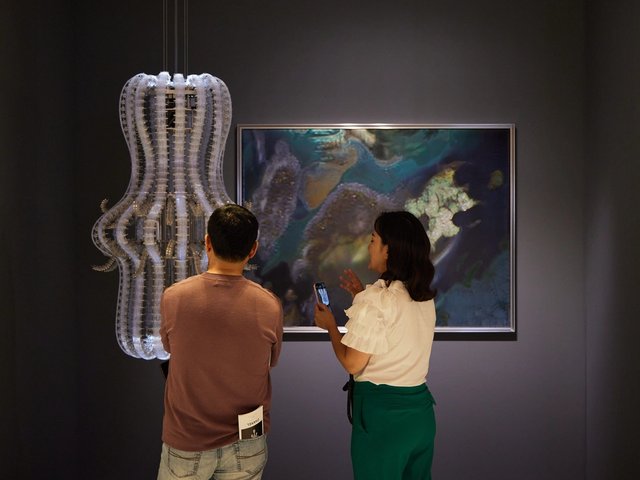There has been K-pop, K-cinema, K-tech and K-philosophy. Now there is K-art and it is much in evidence in London this week, notably at Frieze, which today announces Patrick Lee as the director of its new fair in Seoul, due to launch next September.
Lee, who has been the executive director of Gallery Hyundai since 2019 and before that a partner and director of One and J Gallery, both in Seoul, says art has been more of a slow burner than other aspects of Korean culture, which recently have been rapidly exported and consumed across the globe. The Korean drama Squid Game is now Netflix’s most popular new series, racking up 111m views in its first 28 days. K-pop band BTS’s collaboration with Coldplay is currently riding high in the US charts. Meanwhile, at the START Art Fair at Saatchi Gallery (until 17 October), three more of K-pop’s biggest stars are showing their paintings.
“I wouldn’t say art is the missing link,” Lee says, “but it takes time to understand the machinations of the art world.”
The cultural exchange is flowing both ways. In the past six months, several international galleries have opened in Seoul including Berlin’s König Galerie, which opened a space in the luxury boutique MCM Haus in April, and the Austrian Thaddaeus Ropac gallery, which launched just last week in the Hannam-dong district. The New York-based Gladstone Gallery also announced last month that it plans to open an outpost in Seoul.
“The government is thinking about imposing a tax on artworks, but the art world is resisting”Kyung-mee Park, president, PKM Gallery
Dealers are beginning to tout tax-friendly Seoul as a more attractive alternative to Hong Kong, which has suffered mounting crackdowns on freedom of expression in recent months. “We believe Seoul could be a hub for the Asian market—and the rest of the world,” says Sojung Kang, the director of Arario Gallery, which is showing multi-media works by the Korean artist Soungui Kim for its debut at Frieze Masters. “We don’t have any tax issues, there are no issues with shipping and everything is very convenient. What is more, we don’t have political issues, we are stable.”
Thaddaeus Ropac describes the almost zero VAT on art as “astonishing”, adding: “Seoul is like a freeport, but it has a much more developed infrastructure of academies, foundations and museums than in Hong Kong.”
Taxing times
Those tax advantages could soon change, however. “The government is now thinking about imposing a tax on artworks, but the art world is resisting,” says Kyung-mee Park, the president of PKM Gallery, which is also exhibiting at Frieze Masters and sold a $600,000 work by the artist Yun Hyong-keun, a leading figure of Korea’s Dansaekhwa monochrome painting movement, during the fair’s VIP opening on Wednesday. “The government so far has not touched [tax on art], but it’s only a matter of time.”
Though there are many established private collections in South Korea, the fastest growing pool of art buyers are in their 20s to 40s—many of whom made money on the financial markets during the pandemic bubble. Park thinks the mushrooming number of younger collectors is very much connected to the government’s real-estate control policy. She says: “The government started to impose a big tax on real-estate transactions, so people are being very hesitant when it comes to buying or selling their homes. As a result, the best medium of investment has been art.”

Korean collectors tend to favour painting over other media such as photography. Here a visitor views works by Kim Soungui at the Frieze Masters stand of Arario Gallery David Owens
At both Frieze London and Frieze Masters this week, there has been a dearth of Asian collectors, which the fair had made a conscious effort to woo before the pandemic hit. US collectors have, however, very much been in evidence (unlike at Art Basel last month). Isabella Kairis Icoz, a senior director at Lehmann Maupin gallery, which opened its Seoul outpost in 2017 and continues to grow its presence in the city, says the gallery has placed a number of works by the London-based Korean heavyweight Do Ho Suh with American collectors. Other pieces have gone to collectors based in the UK and Europe. Prices on the stand range from $350,000-$600,000 for Suh’s pink diaphanous architectural structure Hub-2, Breakfast Corner, 260-7, Sungbook-dong, Sungboo-Ku, Seoul, Korea (2018), to around $50,000 for his robotic drawings, produced during lockdown.
Medium of choice
After the US, South Korea is Lehmann Maupin’s second largest market, according to Icoz, who notes that Korean collectors’ tastes are typically broader than in China, for example. Hernan Bas, Osgemeos and Erwin Wurm are among the diverse group of artists the gallery has recently shown in Seoul.
Nonetheless, painting is the medium of choice for many Korean collectors, according to Arario Gallery’s Kang, who says: “Private collectors are buying painting. They’re not really interested in photography or digital art.” At Frieze London, too, works by Korean painters including Park Seo-Bo, Kim Yong-Ik and Ha Chong-Hyun were quick to sell on the stand of New York gallery Tina Kim (prices range from $200,000 to $500,000).
As for Frieze launching in Seoul, galleries are upbeat. “The Seoul move is very timely and lucky, because the Korean art market has been booming since late last year,” PKM Gallery’s Park says. “I think this mood and atmosphere will continue until the [fair] opens next September.”





